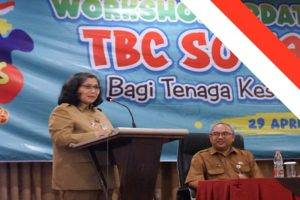How does understanding and addressing our ‘inner child’ influence our mental well-being and pave the way for transformative healing?
Hidden within the recesses of our psyche, the ‘inner child’ symbolises our earliest and most vulnerable experiences. Interestingly, this emotional echo from our past often directly influences our present behaviours, relationships, and overall well-being.
Recognising this, by acknowledging and nurturing this facet of our identity, we subsequently embark on a journey of self-discovery and healing. In doing so, we potentially unlock a deeper understanding of ourselves, ultimately paving the way for personal growth.
What is the ‘Inner Child’?
The “inner child” is a psychological concept that represents the subconscious part of our psyche, which holds onto the memories, feelings, and experiences from our childhood.
Originating from Jungian psychology, this idea furthermore posits that our early life experiences, especially those from childhood, play a pivotal role in shaping our adult behaviours, emotions, and decisions.
Building on this notion, Carl Jung, a renowned Swiss psychiatrist, highlighted the importance of addressing and healing unresolved traumas from our youth. He consistently emphasised their potential to profoundly influence our mental well-being as adults.
Recognising the Wounds of the Inner Child
Our emotional core, shaped by experiences from our formative years, can significantly influence our adult lives. Many of our emotional challenges and seemingly irrational reactions stem from this core, which houses the wounds of our inner child.
Fear of Abandonment
This fear often stems from experiences in early life where a child may have felt neglected, abandoned, or rejected by caregivers. As adults, this can translate into heightened sensitivity to rejection, clinginess in relationships, or an overwhelming fear of being alone.
Persistent Feelings of Inadequacy
Childhood experiences of constant criticism, comparison with peers, or not being acknowledged can lead to deep-seated feelings of never being “good enough” in adulthood. Such feelings can manifest as imposter syndrome, chronic self-doubt, or an overbearing need for validation from others.
Chronic Guilt
Persistent guilt feelings might have roots in early experiences where a child was made to feel responsible for events beyond their control or was frequently blamed for things that weren’t their fault. In adulthood, this could result in a pattern of excessive apologising, avoiding responsibility for fear of blame, or constantly feeling like a burden to others.
Recognising these signs and understanding their origins is crucial. Once identified, therapeutic interventions like psychotherapy, counselling, or inner child healing exercises can be employed to address and heal these deep-seated wounds.
The Asian Perspective on the ‘Inner Child’
The idea of the inner child, though universal, manifests and is addressed differently across cultures. In many Asian societies, centuries-old values and philosophies shape the way individuals interact with their emotional selves.
Familial Honour and Duty
In several Asian cultures, the emphasis on family honour and filial piety often takes precedence over individual needs and desires. This might lead individuals to suppress their emotional traumas or the needs of their inner child to uphold family expectations.
Emotional Suppression
Direct emotional expression, especially negative emotions, might be seen as disruptive in some Asian contexts. This could result in internalised emotions, which can influence the inner child’s wounds and how they manifest in adulthood.
Collectivist vs. Individualistic Paradigms
Many Asian cultures lean towards collectivist values, where the needs of the group (often the family) supersede individual needs. This can further complicate the journey of recognising and healing the inner child, as it requires balancing individual emotional needs with cultural expectations.
Healing Approaches
Traditional Asian healing practices, like meditation, mindfulness, and even certain rituals, can offer unique ways to address the wounds of the inner child. These practices, when combined with modern therapeutic techniques, can provide a holistic approach to healing.
The Journey to Healing Your Inner Child: Techniques and Therapies
Healing the inner child is a holistic journey, encompassing acknowledgment of past traumas and fostering a nurturing relationship with our younger selves. Various therapeutic techniques have been shown to be effective in this healing process.
Guided Meditation
This technique involves leading an individual through a series of meditative processes, helping them reconnect with their inner child, and address unresolved emotions. By visualising and conversing with their younger selves, individuals can offer reassurance, understanding, and healing.
Creative Expression
Arts and expressive therapies, including drawing, painting, music, and dance, allow individuals to communicate and process emotions that might be challenging to articulate verbally. This form of therapy can be particularly effective for those who find traditional talk therapy limiting.
Talk Therapy
Traditional psychotherapy remains a cornerstone in addressing the wounds of the inner child. Cognitive-behavioural therapy (CBT), in particular, can help individuals reframe negative thought patterns stemming from childhood traumas.
Inner Child Journaling
Writing to and from the perspective of the inner child can be a powerful method for understanding and healing childhood wounds. This technique allows for a direct dialogue with one’s younger self, facilitating understanding and compassion.
Group Therapy
Often, sharing experiences and feelings with others who are on similar journeys can be therapeutic. Specifically, group therapy offers a supportive environment to express emotions, share coping techniques, and foster mutual healing.
The journey to heal the inner child is deeply personal, and the most effective techniques vary from individual to individual. What’s crucial is the commitment to self-understanding, compassion, and healing.
The Broader Impact on Mental Health
Understanding and healing the inner child has a cascading effect on overall mental health. Firstly, individuals often report improved relationships. Moreover, they experience enhanced self-awareness and a more profound sense of inner peace. Additionally, addressing these deep-seated issues can not only help in mitigating more severe mental health disorders but also foster a sense of self-love.
Embarking on the journey of healing the inner child is transformative, not just for our mental health but for our overall wellbeing. Initially, it might seem daunting, but as we nurture and understand this integral part of our psyche, subsequently, we pave the way for a brighter, more emotionally balanced future. In essence, reconnecting with our inner child can lead us to a more harmonious life.
References
- Stevens, A. (1994). Jung: A very short introduction. Oxford University Press
- Jung, C. G. (1964). Man and his symbols. New York: Doubleday
- van der Kolk, B. A. (2014). The body keeps the score: Brain, mind, and body in the healing of trauma. Journal of Clinical Psychology, 70(8), 850-858.
- Schore, A. (2001, January 1). The Effects of Early Relational Trauma on Right Brain Development, Affect Regulation, and Infant Mental Health. ResearchGate. https://doi.org/10.1002/1097-0355(200101/04)22:1
- Chaniago, Y. S. (2017, October 18). Attachment in Adulthood – Structure, Dynamics, and Change-Mario Mikulincer PhD Phillip R. Sha.pdf. Mercibuana. https://www.academia.edu/34596672/Attachment_in_Adulthood_Structure_Dynamics_and_Change_Mario_Mikulincer_PhD_Phillip_R_Sha_pdf
- Yeh, K. H., & Bedford, O. (2003, November 14). A test of the Dual Filial Piety model. Asian Journal of Social Psychology; Wiley. https://doi.org/10.1046/j.1467-839x.2003.00122.x
- Butler, E. A., Lee, T. L., & Gross, J. J. (2007, February 1). Emotion regulation and culture: Are the social consequences of emotion suppression culture-specific? Emotion; American Psychological Association. https://doi.org/10.1037/1528-3542.7.1.30













